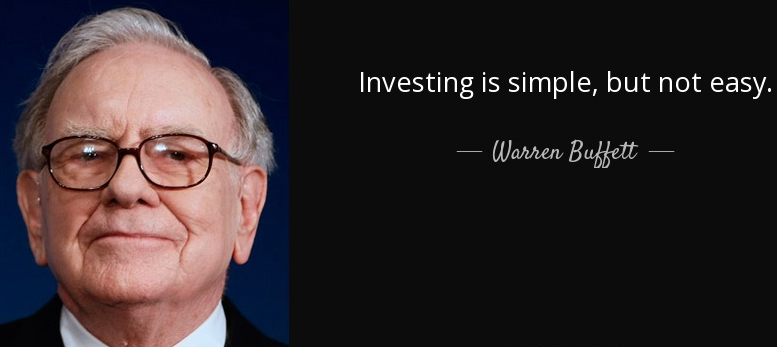
Basic Investing Formula
Investing has two equally important decisions. Buying and Selling. Since time works to our advantage, buying at a fair price and waiting a long period of time 3-5 years or longer will generally produce very fruitful results. Ultimately, investing is buying a future stream of cash flows at a price today. The harder part is maintaining a clear discipline for buying and selling the future stream at a good price. Our magic formula for all stock purchases and sales decisions, aims to help clarify and simplify the process:
1. Current Financial Health, Free Cash Flow and Staying Power must show positive signs with strong fundamentals.
2. Future Stock Returns will likely approximate = (Dividends) + (Earnings Growth) + (Increase or Decrease in Valuation)
Each of these components has endless sub components that can contribute greatly to the formula. For example, a company may be issuing shares or taking on debt which naturally dilutes the value of shares and decreases valuation multiples. They would be required to get back in the form of added earnings growth to justify. Another component might be dividend payout ratios. If a company is increasing dividends only by paying out more of earnings each year, then the earnings growth estimates likely declines. These are only 2 examples of endless variables. Ultimately, everything a company does will be reflected in the above formula at some point in the future. Our job as investors is to figure out reasonable assumptions and buy companies that meet our specific needs.
Buying
The market is generally making an educated guess about each of these components in real time. As news is released, the market reflects the general sentiment around the future expectations. As investors we understand that a company with stable dividends, earnings growth and stable valuations will reward us over a long period of time. For growth investors we may not need a dividend and prefer higher earnings growth, but the equation remains the same. In the short run earnings growth may exceed expectations, which will drive prices higher than normal but usually will revert back to a more normalized growth rate at some point. Same is true on valuations which may get out of balance, with certain industries selling for higher or lower dollar per profit than normal (industry or company standard) over shorter time periods, but we generally see this revert back at some point.
Lets look at a company we love, but are starting to get concerned about forward growth meeting expectations. The company is named VF Corp. They own many different apparel brands such as Wrangler Jeans, Northface, Jan Sport, Eastpack, among many others. They are a well-diversified company that has shown wonderful financial management, pays a solid dividend and has rewarded shareholders over long periods of time. We purchased them on 3-7-17 at $52.53 for clients. As of this article they sell for $69.97. A very nice 33% return not including dividends received. We also collected 0.84 a share over this time in dividends which adds about 1.60% more in return. It was easy to calculate the value in March. Take a quick peak at some assumptions:
Appreciation = 3.2% + (5-10% earnings growth) + (selling at close to industry valuation P/E)
After a deep dive it appeared the dividend was stable and could easily be expanded, earnings growth at minimum should equal 5% and the company held a premium brand due to diversification within the industry but was selling at industry level valuations. Long term we projected a total return of 8-15% was very achievable for shareholders, maybe more if we saw investors reward management with a premium valuation for the competitive advantage they hold in the apparel industry. A company we felt comfortable holding for the next 5 years regardless of market condition.
Fast forward 8 months and take a new look, AFTER a 33% run up in price:
Appreciation = 2.6% + (3-8% earnings growth) + (20-30% premium to industry)
While we feel good about receiving a 2.6% dividend, they have less room to add into the dividend since more is being paid by earnings (higher payout ratio). As a result we slightly reduce our earnings projections to 3-8%. Due to the run up they are now selling at a large premium to peers and industry. Going forward this leads us to a reduced expectation of 1.6% to 6.6%, assuming the premium is slowly reduced to a normal premium over the net 5 years. Of course they could always surprise us and accelerate earnings, but the odds of generating 10% annualized returns has been reduced. So we are left asking if we trust them enough to generate outsized earnings to keep owning them?
Selling
The other choice is to sell and invest. We evaluate any sale relative to purchasing another worthy stock in same sector, increasing positions in another sector or owning a more passive index to cast a wider net. So we must calculate the same formula for alternative stocks and/or the index we would swap into. For illustration purpose, we will take a close look at Vanguard High Dividend Index (VYM):
Appreciation = 3% + (3-6%) + (0 since we own the market valuation in an index)
We see an expectation of 6-9% for the index on a comparable basis. We actual feel the whole market may see valuations decline and perhaps 4-7% is more realistic. In both cases it appears we gain little from owning VFC as compared to the wider market. Without a higher dividend, higher growth or any other legitimate contribution to meeting investors objectives we should prefer casting a wider net and getting more diversification. As such we would sell and choose the passive index unless or until we can find a company we feel offers long-term value above the index. In this way we continue a proper balance between passive and active management. When active management looks to be an obvious long-term contributor over passive we engage, but if the data shows otherwise we will remain balanced and choose more passive. This method stems from countless studies showing active and passive combined work well together. Above is a great example of how we think through such balance in application for stock selection and allocation.
Active / Passive Approach
Below is an excerpt from a study by Vanguard showing the power of active/passive combinations.
The study includes some good and some bad active approaches, but shows the ability to increase consistency and reduce many elements of risk. We believe strongly that consistency is key. We do not aim to be the best performer (which would generally mean outsized risk taking), but rather be consistently good. We do this because we know the best short term performers usually regress at some point and could harm long-term objectives. Consistent performers give best probability of meeting long-term objectives. By overlaying this philosophy, executing with a clear discipline and also producing income when needed for objectives, we are able to better produce consistent long-term results in line with client goals.
For reference, the full study and commentary are HERE
Evergreen Conclusion
The allure of active management can often come at the long term expense of client objectives. Proper balance for consistency often involves a clear methodology, philosophy and some elements of balance between active and passive. Active approaches provide the most return during times of large disconnect from market norms such as 2008/2009 or early 2016. When earnings growth is matching expectations, passive can provide a more valuable tool. Having the ability to harness the power of both should help eliminate extreme style and management swings and provide a more consistent ride to your goals.
Evergreen Wealth Management, LLC is a registered investment adviser. Information presented is for educational purposes only and does not intend to make an offer or solicitation for the sale or purchase of any specific securities, investments, or investment strategies. Investments involve risk and unless otherwise stated, are not guaranteed. Be sure to first consult with a qualified financial adviser and/or tax professional before implementing any strategy discussed herein. Past performance is not indicative of future performance.
